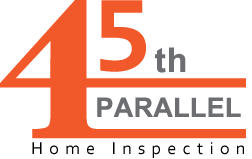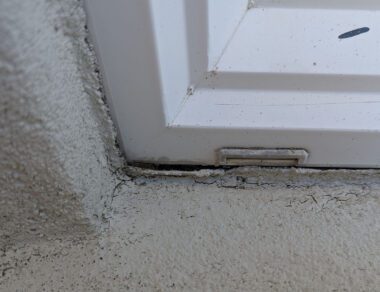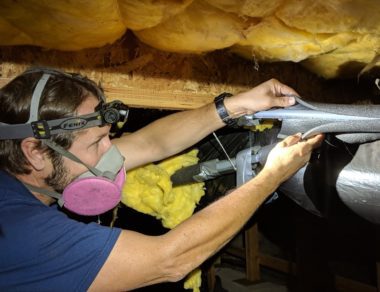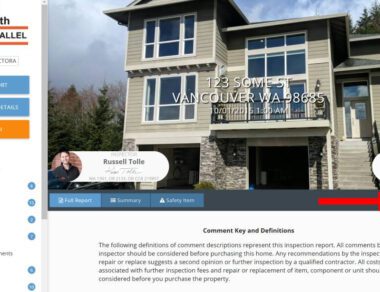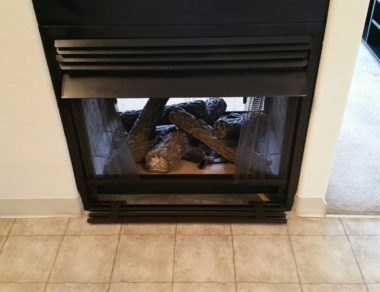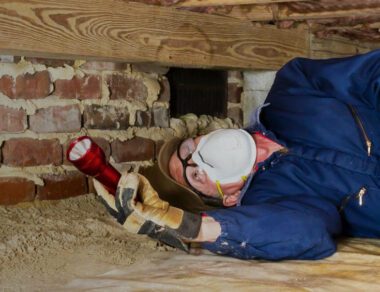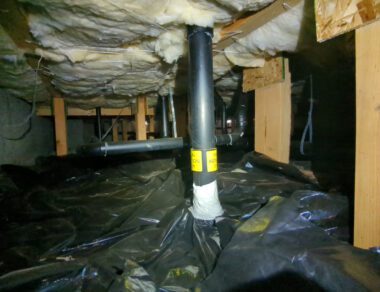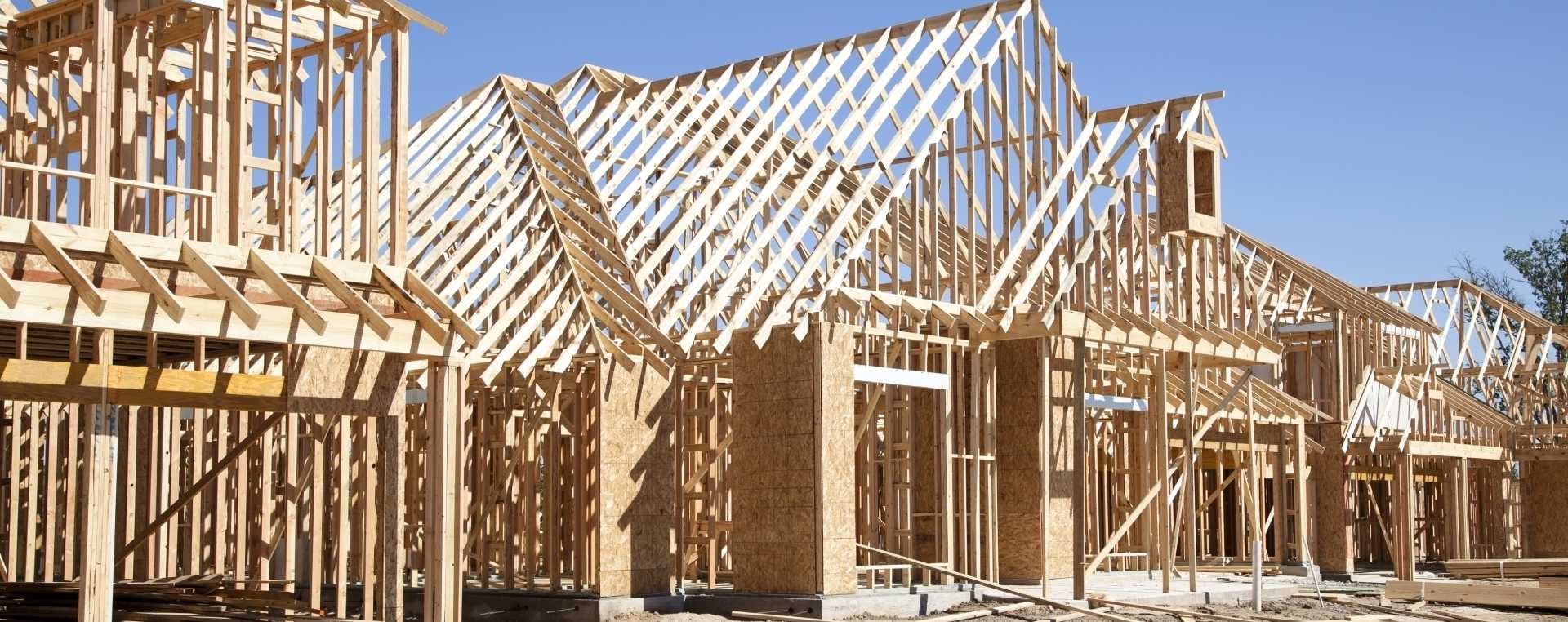
You're on the brink of owning your dream home–a brand new construction, fresh off the builder's lot or your lot, customized to your wishes. But before you sign on the dotted line and start envisioning where your furniture will go, there's a crucial step you shouldn't overlook: the new construction home inspection. In this blog post, we'll dive into why this inspection is a non-negotiable part of the home-buying process and what you can expect from it.
Why are New Construction Home Inspections Important?
You might be thinking, "But it's a new home, what could possibly go wrong?" Well, let us tell you–plenty! In all the years and the thousands of inspections, we’ve never seen a home be 100% perfect. That includes brand new homes. While new construction homes may appear flawless on the surface, there are always repairs to be made, mostly small, but sometimes big.
From shoddy workmanship (yes it happens) to overlooked defects (more than you might think). Most of the time, it isn’t intentional and is just a by-product of so many trades, hands, and teams working on a house. But there are a lot of moving parts when it comes to building a home. There are easily more than a dozen teams that contribute to completing a new home from start to finish, sometimes in as little as 100 days.
With so many teams, trades, and individuals working on a home, it is guaranteed that there are things that get overlooked and need repair. Sometimes it is because of poor craftsmanship, but often, it’s just because one tradesman comes after another one and has to make modifications or adjustments to make it possible to do their job. So, when making those modifications, an issue is often created.
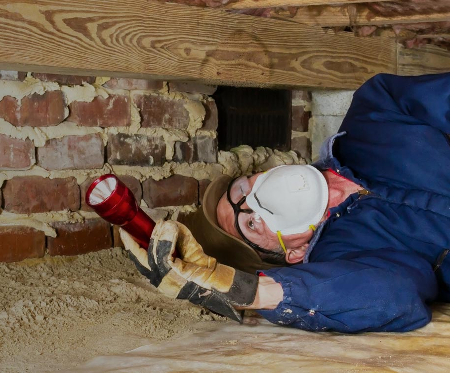 As an example, the framers did a sweet job on the floor structure, but a plumber needs a drain pipe to go right where a floor joist is sitting. Well, the plumber is following the drawings, so a drain pipe goes right where the floor joist is sitting. The problem then became that the floor joist had to be cut to make way for the drain pipe. Perhaps the plumber tells the site supervisor that the framers need to return to perform a repair to support the cut joist, and it gets forgotten by the supervisor or perhaps the framers just don’t get the memo to return. The scenarios are endless. However it happens, things get missed.
As an example, the framers did a sweet job on the floor structure, but a plumber needs a drain pipe to go right where a floor joist is sitting. Well, the plumber is following the drawings, so a drain pipe goes right where the floor joist is sitting. The problem then became that the floor joist had to be cut to make way for the drain pipe. Perhaps the plumber tells the site supervisor that the framers need to return to perform a repair to support the cut joist, and it gets forgotten by the supervisor or perhaps the framers just don’t get the memo to return. The scenarios are endless. However it happens, things get missed.
A new construction home inspection with a professional home inspector of your choosing serves as your safeguard, helping to ensure that your investment is sound and that you are getting a home with no major obvious defects. This goes beyond the inspections performed by city and county officials. As home inspectors, we sometimes still find issues with something that has been inspected and ‘signed off on’ by a city or county inspector.
That is actually a conversation we have periodically with builders and customers. When the builder states that it passed inspection and that there is nothing further to fix, it becomes a bit of a tug of war sometimes. Yes, city inspectors, county inspectors, and home inspectors all miss things. It’s not possible to see and find every single thing deficient in a home given the time constraints we all work under.
What Should You Expect During a New Construction Home Inspection?
So, what exactly does a new construction home inspection entail? A thorough examination of every accessible part of your new home, from the foundation to the rooftop. Your inspector will meticulously scrutinize the structural integrity, electrical systems, plumbing, HVAC system, crawlspace, attic, roof, and more, leaving no stone unturned in our quest to uncover any potential issues.
Our effort in a new construction home inspection is to help make sure that you, the customer, are getting what you paid for. And that is, a new home relatively free of defects, and certainly free of major observable defects.
What Are Common Issues Found During New Construction Home Inspections?
Despite the best efforts of builders, new construction homes aren't immune to defects. Common issues that may be uncovered during inspections include faulty wiring, faulty siding installation, plumbing leaks, roof issues, inadequate insulation, improper grading around the home, and subpar craftsmanship. While some issues may seem minor at first glance, they have the potential to snowball into major headaches if left unaddressed.
This includes the outside of the home as well. We refer to the outside of the home as the building envelope. The building envelope is a series of systems that work together to help create a water-tight skin to resist air and water intrusion into the interior of the home. Adhered stone veneers are quite popular in our neck of the woods, but when installed incorrectly, can lead to some major exterior and even interior damage over time due to water intrusion. We’ve seen it enough times to know that even though it looks great on the outside, incorrect installation can be costly.
Some of the more common things we find in new construction are:
- Roof defects - This is often just debris left on the roof that should be cleaned off, but it can occasionally be larger issues like incorrect shingle installation or missing air vents that leave holes in the roof
- Siding defects - We very often find incorrect siding installation such as loose siding, incorrect installation, and missing or gapping caulk at various locations
- Interior issues - Usually, these are just small issues, but cracking or gapping grout in showers and around sinks should be repaired
- Electrical - We don’t find too many electrical issues, but sometimes find missing covers on jboxes in places like attics and crawlspaces, and once in a while, larger issues like incorrect breakers that should be arc fault protected or missing GFCI breakers or receptacles
- Pluming - Occasionally, we find small leaks and things like missing insulation on water piping in places like attics and crawlspace
- Insulation - Sometimes we find complete areas not having any insulation like attic and crawlspace areas, and occasionally, insufficient insulation in the attic to meet the minimum energy efficiency requirements
- HVAC - Fairly often, there are bathroom vents in the attic improperly vented or hanging loose, and occasionally we find heating and cooling systems like heat pumps that do not operate properly
There are many more examples that we could include, but you get the idea.
What Happens If Issues Are Found During the Inspection?
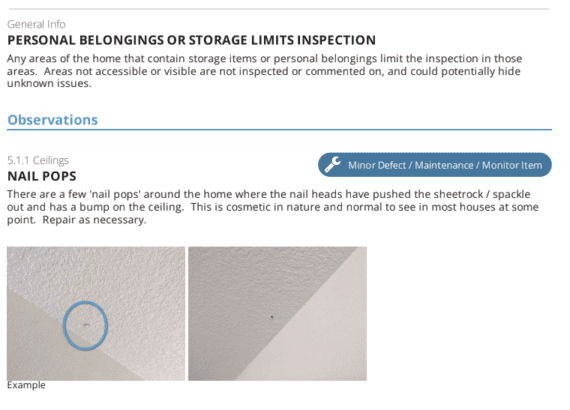 So, you've received the inspection report, and it's not defect-free. Don't panic--this is where your newfound knowledge becomes your greatest asset. Armed with the inspection findings, you have the power to negotiate with the builder to address any issues before closing. With new construction, this usually takes the form of repairs before closing.
So, you've received the inspection report, and it's not defect-free. Don't panic--this is where your newfound knowledge becomes your greatest asset. Armed with the inspection findings, you have the power to negotiate with the builder to address any issues before closing. With new construction, this usually takes the form of repairs before closing.
In the worst case, we have had customers that walk away from the new home purchase, but that does not happen very often. Usually, the builder is more than happy to make reasonable repairs for things that we point out as needing repair. Here is one point we like to make with customers. Our goal is to be reasonable. We as inspectors don’t expect to find a perfect house, and we are not after little cosmetic things.
Those are things we typically refer to as ‘blue tape’ things because the builder has a project manager who does blue tape markups of the home that need cosmetic repairs on the interior. Our goal is to point out reasonable things that should be repaired, not to overwhelm the builder with a bunch of cosmetic repair items. We want you to be in the driver's seat when it comes to protecting your investment.
We understand that the prospect of adding yet another step to an already lengthy home-buying process can be nerve-wracking. But trust us when we say, a new construction home inspection is a small investment that will pay dividends in the long run. Either through heading off issues before you buy to give you peace of mind, or to find and require the builder to make relevant repairs
Frequently Asked Questions
While builders may conduct their own inspections, an independent inspection from 45th Parallel Home Inspection provides an added layer of assurance and impartiality, ensuring that your interests are fully represented.
Typically, a new construction home inspection can take anywhere from 2 to 4 hours, depending on the size and complexity of the home.
Only if you are meeting the builder to go over things about the upcoming home closing. But we do not need the builder to accompany us while doing an inspection, and prefer to have space to work freely without hindrance or unnecessary conversation. In fact, if the builder wanted to follow along, we would politely ask them not to.
Minor issues identified during the inspection can usually be addressed by giving the builder our home inspection report. In our experience, you will typically not get much pushback about performing identified repairs, because as mentioned previously we try to be very reasonable by identifying necessary repairs, not every little ticky-tacky thing.
If major defects are uncovered during the inspection, you may have to have a difficult conversation with the builder about the situation, and depending on the outcome, you will have to decide the next step. We don’t see many major deficiencies with new construction, but we do see some.
If major defects are uncovered during the inspection, you may have to have a difficult conversation with the builder about the situation, and depending on the outcome, you will have to decide the next step. We don’t see many major deficiencies with new construction, but we do see some.
A new construction home inspection is a vital step in the home-buying process, offering invaluable peace of mind and protection for your investment. So, before you pop the champagne and celebrate your new digs, take the time to schedule a thorough inspection with 45th Parallel Home Inspection. We think your future self will thank you for it.

